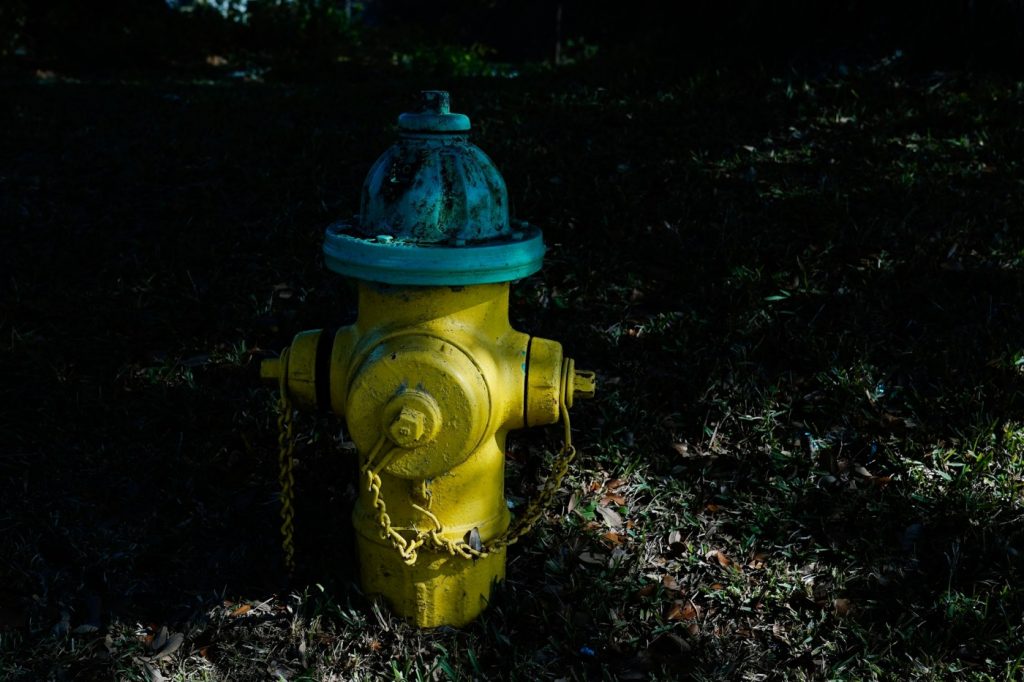By Tammy Webber | Associated Press
Trillions of gallons are lost from aging drinking water systems across the U.S., underscoring an economic and public health reckoning after decades of deferred maintenance and disinvestment that leave some communities struggling to provide reliable service.
The problem is especially acute in older industrial and rural areas in the eastern half of the country that have experienced significant population and industrial decline that leave behind poorer residents, vacant neighborhoods and too-large water systems.
In the Detroit enclave of Highland Park, where the population halved in the past 20 years, an estimated 70% of the water is lost from pipes up to 120 years old. Several Chicago suburbs likely are losing more than 40% of water. And some Georgia systems are losing more than 80% of their treated drinking water, said Sunil Sinha, a water researcher at Virginia Tech.
A January cold snap caused water line breaks in dozens of communities, including Memphis, Tennessee, and an Arkansas town that was without water for two weeks. But systems crack and leak year-round.
Jackson, Mississippi’s system almost collapsed in August 2022, leaving many of the 150,000 residents without water for weeks. Even before that, it was losing an estimated 65% of water, including millions of gallons gushing from broken pipes for years, said Ted Henifin, the water system’s federally appointed third-party manager.
“The waste and cost to ratepayers if you’re losing 50 or 60 percent of your water, it’s enough to make your blood boil,” said Eric Oswald, drinking water director at Michigan’s Department of Environment, Great Lakes and Energy. He said water loss affects many shrinking and older Michigan communities.
Yet water loss has drawn less scrutiny than issues like lead service lines and overflowing sewers, although it has serious consequences: Communities buy or treat far more water than they otherwise would; water in oversized systems can become stagnant, requiring lines to be flushed; and loss of pressure from pipe breaks can allow contamination to enter the system.
Experts say investment often is deferred because raising water rates is unpopular, but also because it’s difficult to borrow money and struggling communities must spend scarce resources on other needs, such as fire protection and police.
Such communities often are “between a rock and a hard place,” said John C. Young, who helped manage Flint, Michigan’s recovery efforts after its lead crisis. He now oversees the water and sewer board in Prichard, Alabama, — which loses about 60% of its treated water — after it was sued for defaulting on a $55 million loan.
There is no comprehensive accounting of water loss nationally, and no federal regulations require communities to control it, said Virginia Tech’s Sinha, who along with the U.S. Geological Survey is studying the nation’s water loss.
It’s often called “nonrevenue water,” meaning it goes unbilled, like water used for firefighting. But in many older towns, most lost water is probably seeping from the system, experts said.
About a dozen states require water systems to report losses, including Georgia, where some communities lose 85% or more, Sinha said. Limiting losses to 10% or less is a reasonable goal, he said.
“If you are losing 30%, 40% or 50% … why (is it not) shocking?” he said.
Illinois officials want to hire staff to ensure communities using Lake Michigan water annually report use and loss. The state has no certified records after 2017, when several communities reported significant nonrevenue water — up to 52% in Maywood, west of Chicago.
“It’s a huge problem because infrastructure is rapidly deteriorating,” said Loren Wobig, director of water resources at the Illinois Department of Natural Resources.
Yet struggling communities often are at a disadvantage when seeking funding.
They can’t rely solely on higher water rates, because shrinking population and industry leave too few customers, and those who remain usually are poorer and minority.
In Prichard, which has lost 60% of its population, water users saw a 22% rate increase last year that hasn’t generated enough revenue to run the system, let alone fix it, said Young, the receiver.
Struggling communities’ leaders say obtaining funding is difficult, including when matching funds are required. Communities also suffer when bond ratings are downgraded, making it difficult to borrow money for infrastructure. And some have variable interest rates that can hurt them in the long run, said Saqib Bhatti, co-executive director of the Action Center on Race and the Economy.
“It’s really a downward spiral,” Bhatti said. “For cities where the population is shrinking and there are high rates of poverty — predominantly black and brown cities — it becomes really hard to actually come up with the money for those investments.”
Despite billions in available federal and state infrastructure grants and low- and zero-interest loans, disadvantaged communities often lack staff, money or expertise to complete reports required of applicants.
Many poor communities like Prichard will need state and federal money that they don’t have to repay to supplement other measures, said Young.
Jackson received $600 million in federal funding. In Highland Park, Michigan, the state brokered a proposed deal to provide $70 million.
Even so, many communities will continue to struggle unless they shrink infrastructure or attract new residents and industry.
Downsizing is difficult for logistical reasons and because neighborhoods targeted likely would be majority African-American areas that saw little investment, said Joseph Schilling, senior researcher at the Urban Institute.
“When you have a long legacy of environmental injustice, racial segregation and exclusionary zoning, any new initiatives have to be done with the community,” Schilling said.
Some Prichard officials want to move residents from Alabama Village, where almost one-fifth of the city’s water loss is thought to be occurring and three dozen houses remain out of more than 100. They say it could also create opportunities for redevelopment.
That angers residents, who say they weren’t told about the water loss even as utility bills climbed or about health risks from low water pressure, said attorney Roger Varner, who sued on behalf of city residents.
“Those are the ones who have been wronged the most because they’re saying, ‘Wait, wait. I pay my water bill, I paid off my home, I’ve got every right to be here and you’re telling me because you haven’t done your job I have to … move?’” said Varner.
Many struggling cities won’t consider downsizing water systems because they hope industry and residents will return, said Oswald from Michigan’s environment department.
“You don’t want to cast doubt on those kinds of grandiose plans,” he said. “But … we’ve got systems that have 300 percent more capacity than the water they deliver.”


